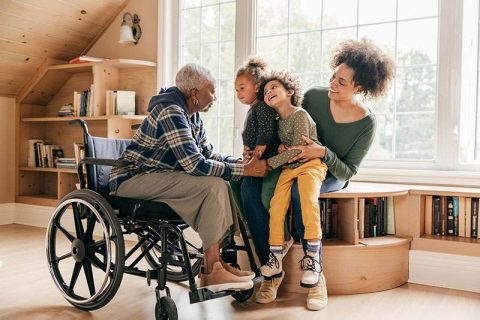February 15, 2023 by

What’s your first thought when you see an elderly person in a wheelchair? Do you see that person as less-than, someone in need of being fixed? Do you assume they need special treatment, as though a physical disability impacts intellect as well? How does this perception vary from when you see an older adult standing upright, without the need for a wheelchair; would you think they were better-abled than the wheelchair-bound senior?
These are tough questions that require honest answers if we’re to understand and respond accordingly to hidden disabilities, ageism and ableism.
What Is Ableism?
Ableism is described as “the discrimination of and social prejudice against people with disabilities based on the belief that typical abilities are superior.” It leads to harmful misconceptions and stereotypes.
The Two Sides to the Disability Coin
Those with visible disabilities encounter ableism in a variety of ways: exclusion from venues that are inaccessible, being spoken down to or asked invasive questions, having to wait to use an accessible restroom stall while in use by someone who could be using a regular stall, etc. Conversely, there are many disabilities that are not as easily visible (such as hearing impairment, Alzheimer’s disease, or a heart condition), accounting for as many as 80% of the disabled population. These individuals may have their concerns minimized and need to fight harder to receive any accommodations needed.
Regardless of whether a disability is apparent or hidden, there are steps we can all take to promote equality and inclusion:
- Treat everyone the way you would like to be treated. Say hello. Look them in the eye. Engage them in a conversation if they welcome the social interaction.
- Avoid trying to think for the person or impose your help. Offer assistance in an open-ended manner if it seems warranted, giving them the option to communicate if they would like your help or not.
- Never speak over or around the person; avoid addressing a caregiver first. Speak directly to the person with eye contact. If help with communication is needed, the caregiver can then step in to assist. Remember that the person is an adult, and should always be spoken to as such.
The senior care professionals from At Home Independent Living are committed to treating each person we serve with dignity and respect. We can help someone you love with a full range of customized in-home care services such as:
- Companionship to brighten each day through conversations, games, activities, arts and crafts, exercise, and more
- Planning and preparing nutritious meals and providing assistance with feeding when needed
- Safety monitoring and support for an exercise plan
- Assistance with walking and mobility
- Transportation and outings
- Respite care
- Running errands, such as grocery shopping and picking up prescriptions
- Specialized care for chronic health needs, such as Alzheimer’s and Parkinson’s disease
- And much more
Contact us at (315) 579-HOME (4663) for more information and to request a free in-home consultation.
